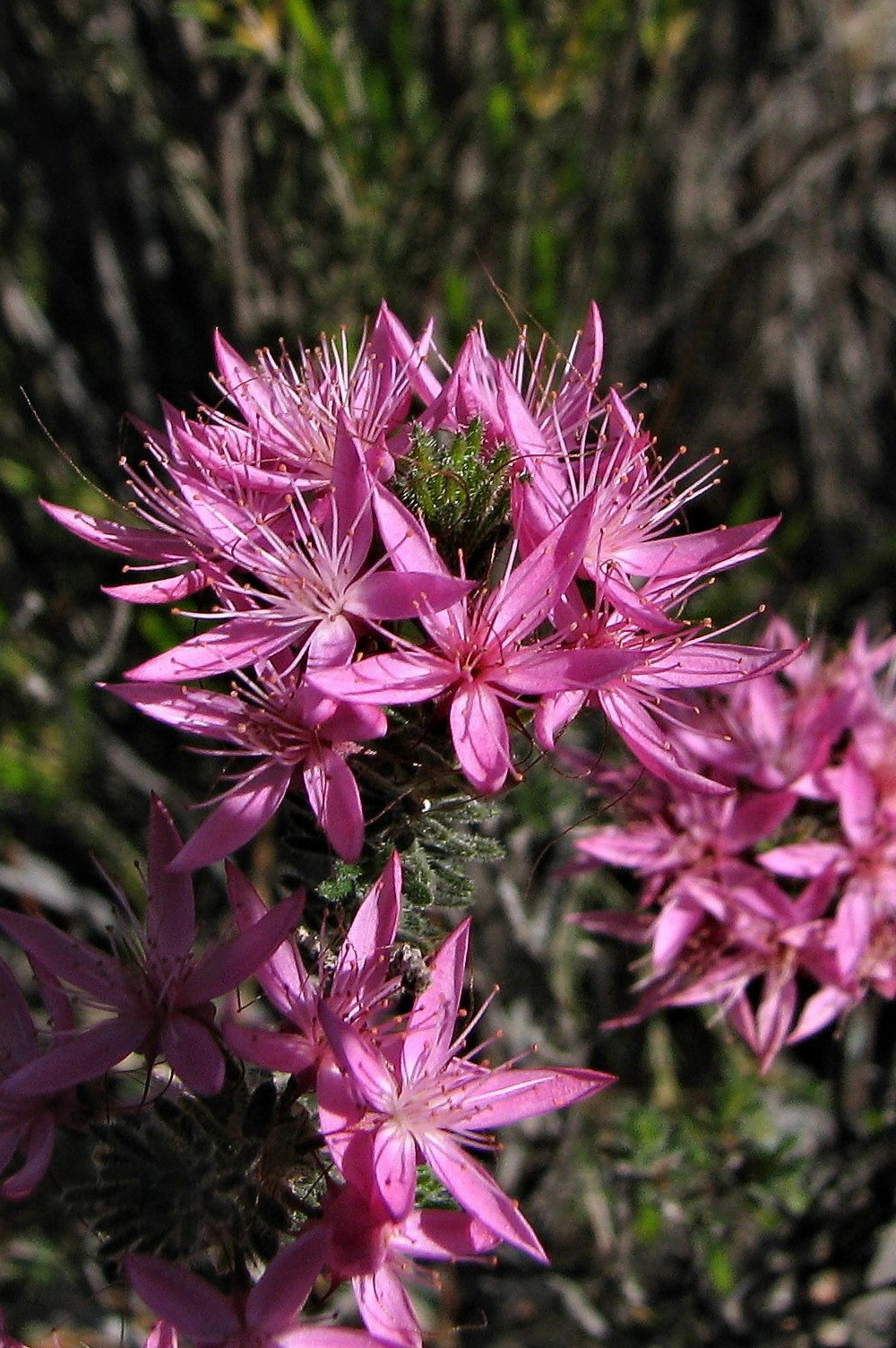Calytrix
Dwarf to large shrubs, glabrous or with simple hairs. Leaves small, spreading, semi-terete, rounded or angular, mostly alternate, sometimes opposite or whorled, aromatic; stipules if present very small. Inflorescences axillary, 1-flowered, pedunculate, subtended by a pair of persistent or caducous bracteoles. Flowers bisexual; hypanthium usually long and tubular, free from or adnate to the style; calyx-lobes 5, spreading, imbricate, persistent, apex usually long-attenuate or awned; petals 5, free, lanceolate to elliptic, imbricate, deciduous; stamens numerous, in 1 or more rows, anthers versatile, opening in longitudinal slits; ovary inferior, 1-celled; ovules 2; style slender, stigma minute. Fruit small, dry, indehiscent, enclosed in persistent hypanthium and calyx, falling from plant when ripe; seed solitary.
Endemic genus of 83 species, in all States but mostly south-west Western Australia.
Lhotskya Schauer is no longer recognized as distinct from Calytrix. The principal difference between the 2 genera was the presence of awned appendages on the calyx-lobes in Calytrix, absent in Lhotskya. In e.g. C. tetragona the awns may be long and filamentous in some populations, completely absent in others.
Jeanes, J.A. (1996). Myrtaceae. In: Walsh, N.G.; Entwisle, T.J., Flora of Victoria Vol. 3, Dicotyledons Winteraceae to Myrtaceae, pp. 942–1044. Inkata Press, Melbourne.
 Spinning
Spinning

